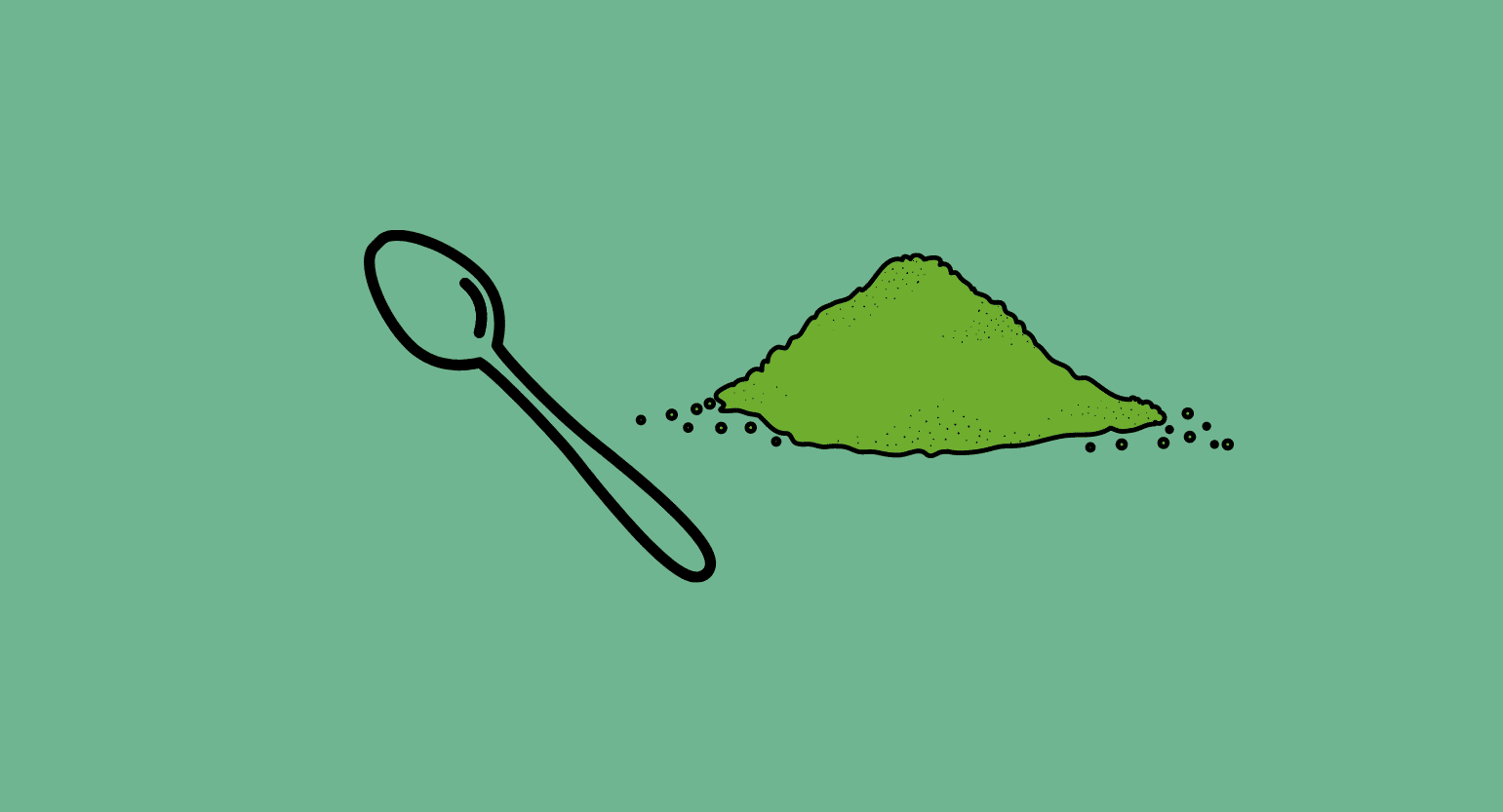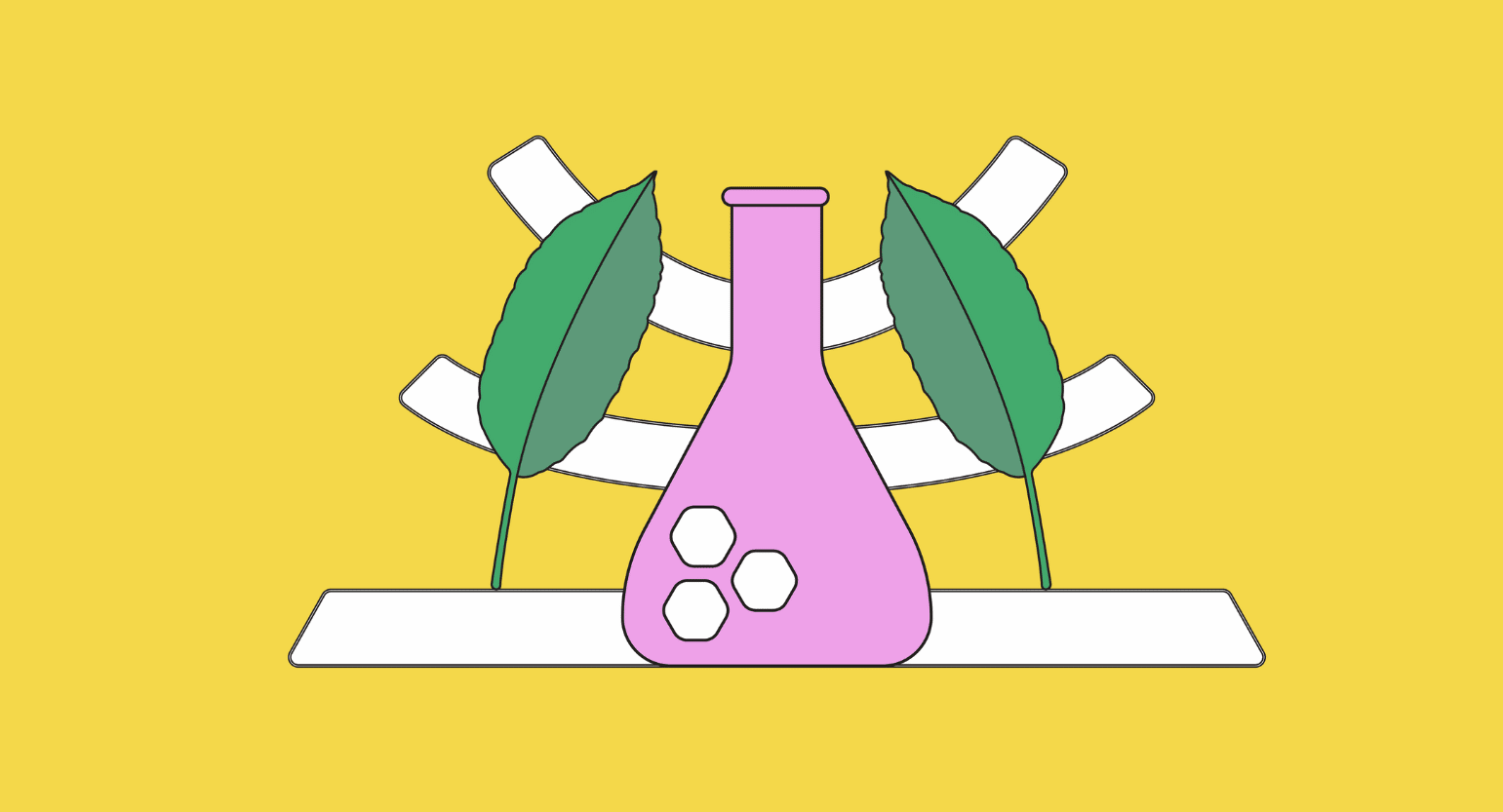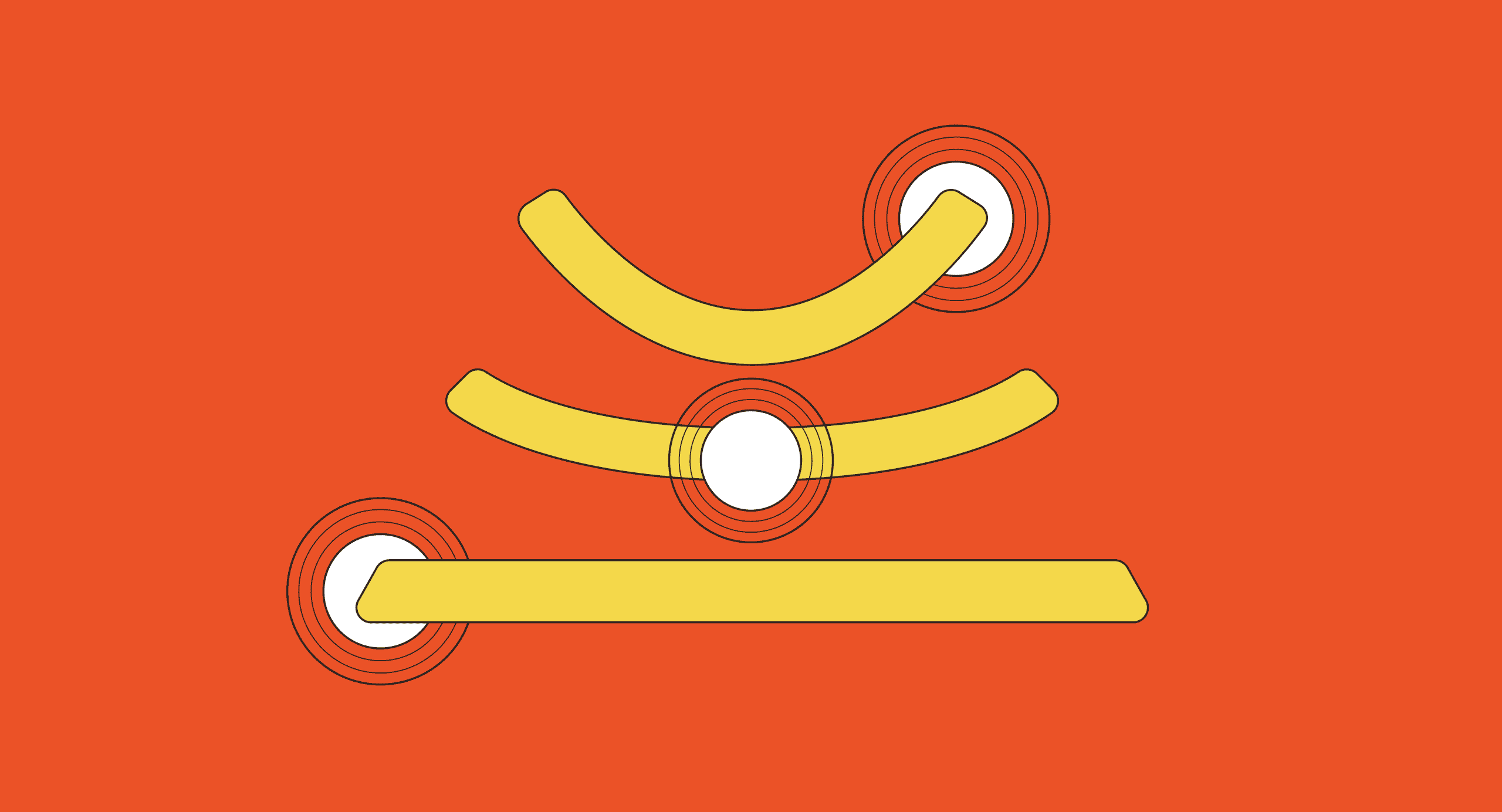Ibogaine vs. Kratom: Comparison
Kratom and ibogaine have some similarities but are entirely different plants with very different uses.
Let’s take a look at the most common comparisons between ibogaine and kratom.
| Ibogaine | Kratom | |
| Active Ingredients | Ibogaine (Alkaloid) | Mitragynine, 7-Hydroxymitragynine, & Others |
| Psychoactivity | Powerful psychedelic | Intoxicant (similar to alcohol) |
| Origin | West Africa | Southeast Asia |
| Main Benefits | Addiction | Pain, anxiety, depression, addiction |
| Pain Support | No evidence for this. | Believed in providing a moderate-to-high level of pain support. |
| Mood Support | It may improve mood because it helps people stop their addictions. | It may produce a sense of well-being and peace. |
| Level of Safety | Moderate to high risk. | Low to moderate risk. |
| Dose | 5 grams to 100 grams | 2 grams to 12 grams |
Addiction Treatment: Ibogaine vs. Kratom
Both kratom and ibogaine are used to treat addiction — but they work through entirely different mechanisms.
Kratom is a substitute for more addictive drugs. This means users can gradually wean off opiates and use kratom instead. Once one is no longer taking the drug, one can start to wean off the kratom. Weaning off kratom is much easier than synthetic opiates.
This is the same method involved with buprenorphine or methadone — which is the conventional treatment for opiate drug addiction used today.
Ibogaine is very different. This substance is a powerful psychedelic drug capable of inducing powerful mystical experiences and ego death.
The type of reset an ego-death experience can induce is often enough to break free from the grasp of substance abuse and addiction — at least for a time. The majority of the work comes after the experience during the integration process.
To date, many studies have shown that it completely removes heroin’s withdrawal symptoms for at least six months [2].

Pain Management: Ibogaine vs. Kratom
Ibogaine isn’t believed to have any noticeable effect on pain. On the other hand, kratom has a long history of helping people with painful conditions such as fibromyalgia.
Mood Support: Ibogaine vs. Kratom
Ibogaine may offer mood support by dislodging difficult memories or past traumas. The experience itself is very uncomfortable — terrifying even. It’s once the experience is done that ibogaine offers a powerful improvement in mood and mindset. Many individuals who use this drug come out as entirely different people with a whole new outlook on life.
Kratom is more specific for enhancing mood — but the effects are fleeting and transient. Kratom is a powerful euphoric, but once the effects wear off, you’re right back to where you started.
Safety: Ibogaine vs. Kratom
Ibogaine works for most people, but it does come with risks. In fact, 1 out of every 400 people who try ibogaine dies. The most common cause of death is cardiac arrest.
Kratom is much safer — the only reported kratom deaths come from people mixing this herb with other dangerous substances or medications.
On its own, kratom is relatively safe — though it’s not without its side effects.
Additionally, kratom itself has the potential to become addictive. However, it takes a long time for someone to become dependent on kratom, and the resulting withdrawal symptoms are much milder than conventional opiate painkillers.
Overall, the risk of death from kratom is significantly lower than it is with ibogaine.
What is Ibogaine?
Ibogaine comes from the Apocynaceae family. It’s been used in Africa for ceremonial and ritual purposes. Ibogaine is one of the chemicals inside the iboga plant and a few other species of plants.
Traditionally, ibogaine is used for:
- Fever
- HIV/AIDS
- High Blood Pressure
- Influenza
- Nerve Disorders
- Preventing Drowsiness/Fatigue
- Swine Flu
Only in the last couple of years has ibogaine gained attention as a treatment for addiction and drug abuse.
Some evidence does suggest that it relieves withdrawal symptoms and increases abstinence. People have used it to get off of cocaine, codeine, heroin, marijuana, tobacco, and alcohol.
A small study in New Zealand showed that a single dose of ibogaine has noticeable effects on patient cessation and depression [1].

Ibogaine Case Reports
Marcus Capone, a retired U.S. Navy Seal, suffered greatly after getting out of the military. He was diagnosed with PTSD, anxiety, and depression. Additionally, he had problems with headaches, anger, impulsivity, alcoholism, and violent dreams.
After four years of battling his demons, Marcus took one Ibogaine pill. He slipped into a psychedelic trip that lasted 12 hours. By the time it was over, he no longer wanted to drink. He also didn’t appear to be suffering from the effects of depression, anxiety, and impulsivity anymore.
Ibogaine is a Powerful Psychedelic
Unlike other psychedelics, ibogaine isn’t something that’s taken just for fun. The experience is far from pleasant and even has the potential to kill you.
Most of the effects of ibogaine come down to its ability to activate the 5-HT2A receptors — which is the same mechanism used by other psychedelics like LSD and magic mushrooms (only with much more force). Ibogaine also works through the kappa-opioid receptors, which is why the ibogaine experience is so different from classical psychedelics.

How Successful is Ibogaine?
A 2017 study on ibogaine took 88 people and followed up with them after treatment [3]. Of these, approximately 80 percent said it drastically reduced or eliminated withdrawal symptoms.
About 50 percent reported diminished cravings, and 30 percent were successful at completely removing their drive to use opioids.
The study’s author, Alan Davis, said it was clear that ibogaine was “not a magic bullet.” However, he believes that even a short-term disruption could give people what they need to get off of opioids.
Is Ibogaine Dangerous?
It’s estimated that one patient out of every 400 will die after using ibogaine. This is much more than kratom, and it brings to light a lot of questions.
For example, conducting a simple ECG or EKG test would most likely discover any waiting heart issues. These issues are at the root of the deaths, but it doesn’t seem like most doctors who administer ibogaine bother to do an ECG.
Per one report, ibogaine affects the heart’s electrical signals, lowering the heart rate [4].

If someone has zero heart problems, this most likely won’t cause any lasting problems. But if they have a heart problem — especially an undiagnosed one — this may be enough to kill them.
What is Kratom?
Kratom (Mitragyna speciosa) is a plant that comes from Southeast Asia. It has a long history of use for its opiate-like effects.
What makes kratom so useful is its dual-action — in lower doses, it’s a stimulant like coffee, but in higher doses, the effects flip, and it becomes sedative instead.
There are many different strains of kratom — each with its distinct set of effects.
There are dozens of different kratom strains to choose from.
We can break down kratom strains into three general categories:
- Red Vein Kratom Strains — strongest sedatives and analgesic strains.
- White Vein Kratom Strains — strongest euphorics and energy-boosters.
- Green Vein Kratom Strains — middle-ground between red and white strains.
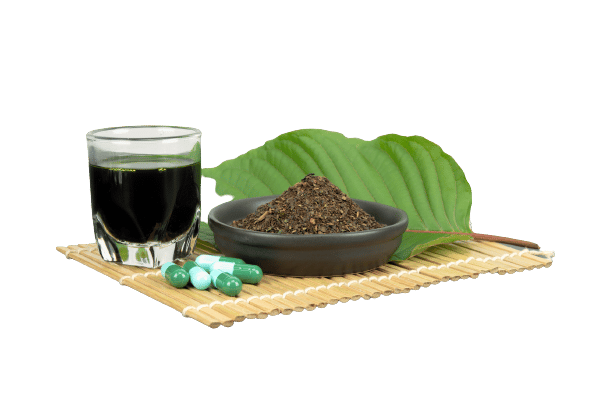
How Does Kratom Work
The primary component within kratom is mitragynine. This alkaloid binds to your opioid receptors, which is how it’s believed to affect pain and opioid withdrawal. It also interacts with other neurotransmitters, including dopamine, serotonin, and norepinephrine.
Also see: What Are Alkaloids?
Is Kratom Legal?
Kratom is currently legal in most of the United States.
However, you’re not allowed to purchase or own it in Wisconsin, Indiana, Vermont, Rhode Island, Alabama, and Arkansas.
Some cities have also banned kratom, including San Diego, CA; Parker Town and Monument Town, CO; Sarasota County, FL; Franklin, NH; and several cities and counties throughout Mississippi.

Is Kratom Dangerous?
Although some deaths were linked to kratom, most of the incidents also included other substances.
To date, only 91 deaths have been linked directly to kratom by the CDC. Most proponents of kratom believe this number has been artificially inflated by the FDA.
For example, a case in one of the FDA’s “kratom-related deaths” reports involved a gunshot wound. The victim had some kratom detected in his bloodstream, so the FDA rules this death “kratom-related,” — which pretty much dissolves any credibility of this report.
Either way, millions of Americans take kratom without any issues, and the herb has been used locally in Southeast Asia for hundreds, if not thousands, of years.
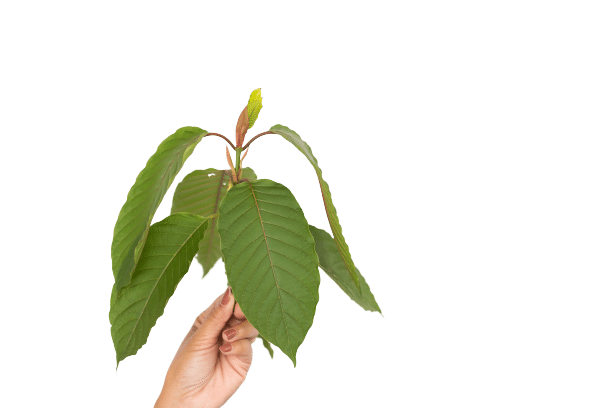
Key Takeaways: Kratom vs. Ibogaine
It’s clear that although ibogaine and kratom have some things in common, they’re not similar substances.
The main thing these compounds have in common is their ability to treat addiction to opiate medications or illicit drugs. Both may have the potential to curb addiction, but their methods of achieving it are extremely different.
Kratom, for instance, is something you regularly use to wean off opiate drugs.
There’s a very low risk of death, and it seems to work fairly well.
Ibogaine is extremely effective for treating addiction in as little as one session, but the risk is much higher.
- Noller, G. E., Frampton, C. M., & Yazar-Klosinski, B. (2018). Ibogaine treatment outcomes for opioid dependence from a twelve-month follow-up observational study. The American journal of drug and alcohol abuse, 44(1), 37-46.
- Alper, K. R. (2001). Ibogaine: a review.
- Davis, A. K., Barsuglia, J. P., Windham-Herman, A. M., Lynch, M., & Polanco, M. (2017). Subjective effectiveness of ibogaine treatment for problematic opioid consumption: short-and long-term outcomes and current psychological functioning. Journal of psychedelic studies, 1(2), 65-73.
- Koenig, X., & Hilber, K. (2015). The anti-addiction drug ibogaine and the heart: a delicate relation. Molecules, 20(2), 2208-2228.s


